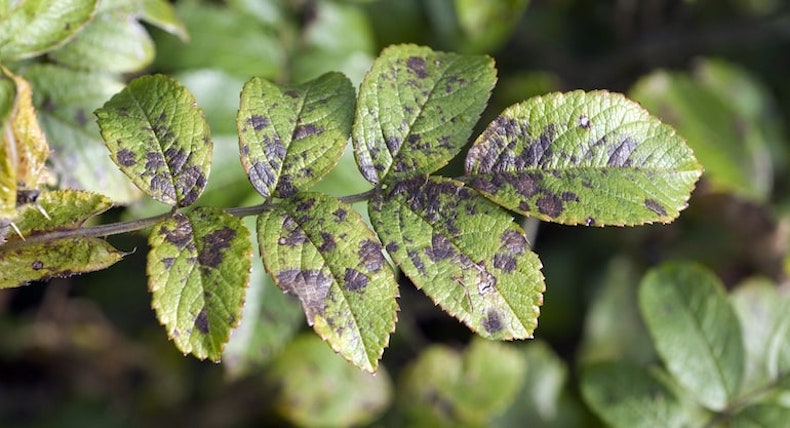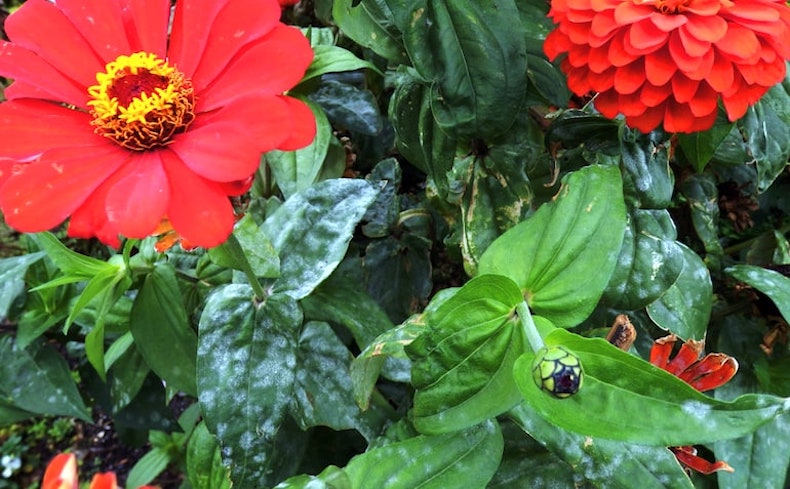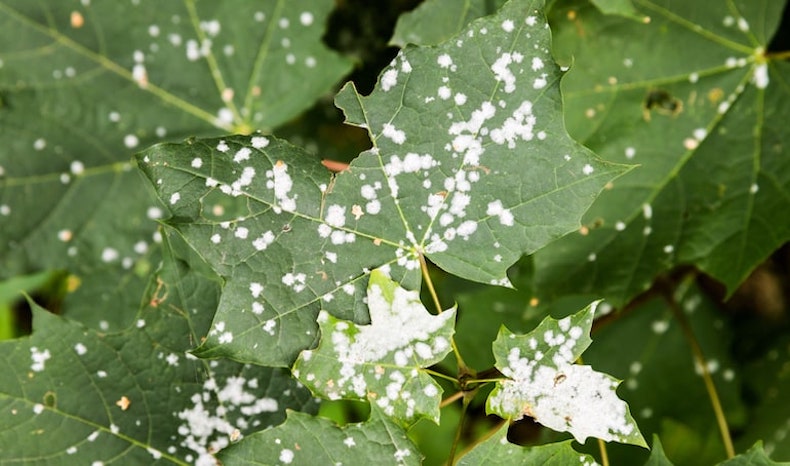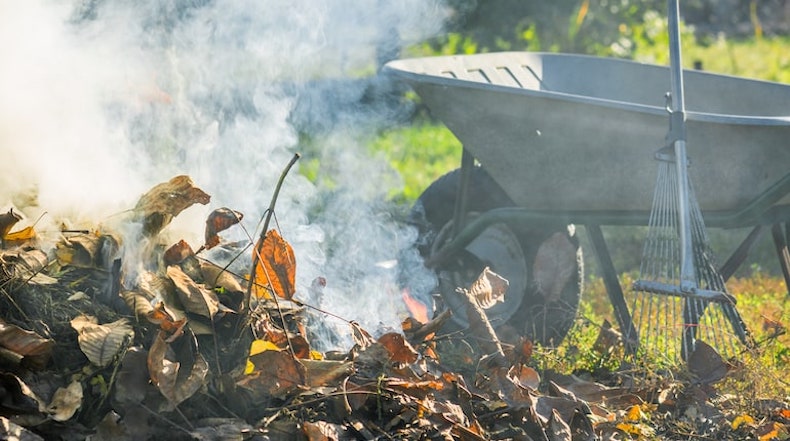Garden diseases - Fungal disease

Fungal disease is the most common form of plant disease
Image: Manfred Ruckszio/Shutterstock
Fungal infections are by far the most common form of plant disease you’re likely to encounter in the garden. Here we take a look at the common origins pathogenic fungi along with common examples and what steps you can take now to avoid the spread of fungal infections and deal with the problem should it arise.
What is a fungus?

White spots on your plants is a tell-tale sign of fungal infection
Image: DAwee/Shutterstock
Fungus is a plant organism which does not produce chlorophyll, the substance that makes leaves green. Because they can’t get their energy via photosynthesis from sunlight, fungi instead absorb nutrients through tiny thread-like filaments called hyphae that branch in all directions throughout a substrate – a growing medium like a leaf or fruit.
Some fungi live on dead things, others colonise living flora and fauna. Some produce disease states in the host, and others are protective. A fungal infection may affect only one type of plant or may attack a variety of different species.
The most common tell-tale sign of a fungal infection is the appearance of Mycelia – patches of clusters of hyphae which take the form of spots, powder, rust, down and cotton wool-like effusions on flowers, stems, leaves and fruit.
How to spot a plant fungal infection

White spots on maple leaves my signal a case of powdery mildew
Image: DimaBerlin/Shutterstock
Wondering why the stems of your begonias are rotting? Fungal diseases like verticillium wilt are a common cause of stem rot and are often exacerbated by over-watering, high humidity and poor ventilation. Always let compost dry out slightly before between watering and try to water from below rather than above were possible to prevent the stems sitting wet..
What's the white powder on my potato leaves? This also sounds like a fungal infection. Often fungal spores spread under quite specific conditions e.g. wet and warm or cool and dry. Try to make sure that the soil is kept moist (but not soaked) and that there is adequate air flow around each plant.
Does your Japanese Maple bush leaves have tiny white speckles on? It is possible that your maple has a fungal infection. If so, then the best course of action is to clear up the fallen leaves this autumn and dispose of them in your normal household waste or burn them to destroy overwintering spores.
How to prevent plant fungal infections
Is fungus infecting your favourite plants? Many fungal problems can be reduced by practising the following cultivation tips:
- Water plants from beneath the foliage rather than over the top, as this can cause the plant to rot and also provides the wet conditions ideal for the spread of fungal spores.
- Don’t crowd plants too closely together – better ventilation reduces the risk of fungal infection.
- Remove and destroy any infected plant material as soon as you spot it.
- After harvesting your crop, remove any mulch from around the plant and cut back the foliage to reduce the build up of pests and diseases.
What to do if your plants are infected with fungi

Sometimes the only cure for fungal infections is burning the diseased plants
Image: HaiGala/Shutterstock
Check whether the kind of fungus affecting your plants is treatable – commercial fungicides can be highly effective, but not all fungus is susceptible to chemical treatment. If you’re thinking of treating plants you’re growing for food, it’s also vital to verify whether any chemical you use is suitable for the treatment of edible crops.
Sadly many fungi are not treatable in which the best advice is to remove all infected material and dispose of it by burning or putting it out for collection along with household waste. Because fungus spreads through the release of spores, many infections arrive in your garden on the wind, but others are spread via infected compost, seeds, plug plants and more.
Be vigilant, act fast and be careful where you buy your plants from – not all suppliers are equal when it comes to ensuring their products are disease-free.
Other pages you might like
See all pests & diseases guides
Individual guides
Diseases
- Apple scab
- Bacterial canker
- Blackleg
- Blossom wilt
- Botrytis
- Brown rot
- Clematis wilt
- Downy mildew
- Honey fungus
- Leaf scorch
- Leaf spot
- Leek rust
- Lily disease
- Peach leaf curl
- Pear rust
- Phytophthora root rot
- Potato & tomato blight
- Powdery mildew
- Silver leaf fungus
- Tomato greenback
- Tomato leaf curl
- Tomato stem canker







